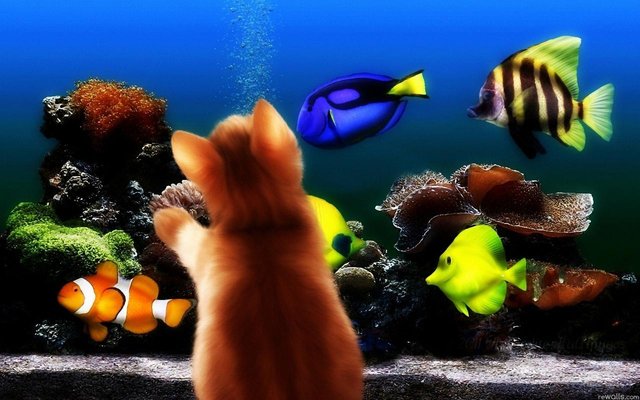New Marine Aquarium – My Part List

After a few months of being busy with life, I am finally going to be putting my Marine Aquarium together. I was on a budget for this setup and spent maybe just shy of $1500 on my setup. I will be slowly documenting everything about this build which may end up a beautiful success or a crashing failure. As with most things, knowledge is key and failing to plan is a plan to fail. I spent ages looking for the right setup for my household, commitments and lifestyle.
In the end I settled for included:
· Tank / Cabinet – Around 90g + 30g Sump
Pretty self-explanatory, a tank is required to hold water. The main display tank sits on the cabinet. To minimise clutter in the display, give livestock some more space and add extra water volume for stability, a filtration tank is used (sump). The sump is placed in the bottom of the tank and has a number of compartments that filters waste water taken from the display tank.
How do we connect the tanks together? Piping that is latched onto a few bulk heads. My display tank is drilled in the back with weir configuration. Why should there be a hole in a glass aquarium?
To summarise, it’s used to drain overflow water from the tank for filtration in the sump. The tank plumbing method may be commonly called the ‘Herbie Overflow’. The weir collects water and two pipes, one for draining and another for emergency are used to continuously siphon. If something blocks the drain pipe, the water level in the weir will naturally rise and well…This is where the emergency drain comes into play, preventing a disaster of a tank flood.
This is a very good explanation of the Herbie system and helped me get my head round the idea:
http://gmacreef.com/herbie-overflow-reef-tank-plumbing-method-basics/
The other method is called ‘Bean Animal’ overflow, giving additional redundancy but I will probably blog about that another tie when doing a more specific and detailed post about my system.
· Wave Makers (Ecotech Wireless Mp40s)
Wave Makers do as exactly as their name imply, they make waves in the water. Similar to the ocean, a vortex or current is created in the water. Why should we do this? Surface agitation is one reason but there are a number of other reasons I invested in a decent wave maker. Having more flow around a tank lifts debris and detritus that may be clinging to the bottom. Sending this around the tank will ultimately collect into the filtration sump and will help to avoid build up.
The pair of power heads are used in a wave form configuration (think of crests, high and low) to circulate my tank. I chose the MP40QD model to have a quieter setup. I am hoping this will be the case when they are blowing the fish around!
· LED Light
Now lighting can be a serious issue of discussion depending on if one wishes to keep corals. I am a novice to this so I will be using lighting on a Fish Only with Live Rock (FOWLR) setup for now. Pure aesthetic reasons to make the tank pop a little when viewing and give the fish a little automated cycle. Lighting can be so smart now, I will cover that in detail another time but I can confidently say, a good light makes an aquarium look even better.
· Dead Marco Rock
To be Live Rock very soon, I bought quite a few different sized bigger and smaller pieces with the intention to aquascape something that will let the fish hide when they want and look aesthetically pleasing. · Aquarium Salt Required for mixing ‘Sea Water’, a balance of salt and Reverse Osmosis (RO) water I used to create a habitable solution for the livestock.
· Refractometer
This measures specific gravity/parts per thousands. The right amount of salt needs to be maintained in the tank and refractometers (manual or digital) are key in maintaining stable tank parameters. I bought a few other test kits but will talk about those when I get into reefing.
· Protein Skimmer
Probably one of the more obscure contraptions I have come to understand, it actively removes organic waste from water (poop, lots of poop and excess food) to reduce nitrate build up. Avoiding high nitrate levels and ultimately ammonia is crucial. Reaching back to my point about high flow to disturb detritus and food, the skimmer is their ultimate goal for removal from the system.
· Return Pump
With waste water being drained constantly to the sump, it’s only natural there needs to be a filtered supply to return. The return pump pushes the clean water back up into the display tank through pressure. Pretty simple, water drain and supply.
· Heater (x2)
My setup is not particularly huge, so one heater would suffice. I am using two for redundancy. In this case, both will work together at half capacity to provide the appropriate target temperatures. If one is to fail, the other will kick it up a notch to compensate. Now this is the barebones minimum to get my setup running, things can get expensive very quickly and I had to really limit myself on this hobby to not go overboard. Starting into the hobby slowly will help me learn more as time goes on.
For my next entry I will probably go into detail about the first initial setup process which is curing, aquscaping and getting the tank wet for the first time.
If any Steemians have their own aquariums I would love to see and hear about them!
Thanks for reading - Momosan
Pic Credit - http://animalli.com/tag/aquarium/